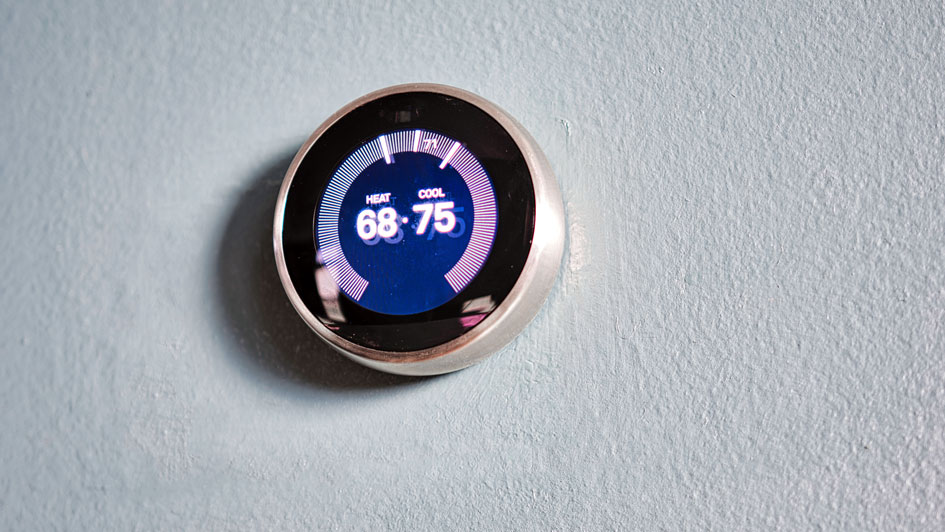
A Nest Thermostat is the perfect way to keep your home comfortable, no matter what the season or weather. With a number of innovative features meant to maximize efficiency, convenience and comfort, a Nest Thermostat is an excellent choice to help you manage your energy use — saving you money in the process.
That’s why more people are looking to add devices like a Nest to their HVAC system. If you want to put in a Nest for your own home, reach out to an expert for smart thermostat installation in Manassas.
From auto scheduling to monitoring your home’s energy efficiency, Nest is designed to make controlling the climate of your home effortless.
Ready to learn more? Take a look at 12 things you should know about your Nest Thermostat.
1. How to Reset a Nest Thermostat
A key piece of information to know about resetting a Google Nest Thermostat is that there's a difference between a restart and a reset.
- Restart: This process is similar across most electronics, including your phone or computer, restarting your Nest Thermostat simply turns it off and then back on. This records your existing thermostat settings, ad can reapply them once you're done confirming if your Nest is frozen or not connecting to Wi-Fi.
- Reset: Conversely, resetting eliminates most if not all of your preferred settings. For the most part, homeowners will perform a reset as they're moving into a new house and bringing the thermostat with them, or if they just want to erase any personal details from the Nest before leaving it behind for the next resident.
To initiate a reset, it helps to record existing temperature settings so you have them if they get erased. Next, go to Settings -> Equipment and write down the details about your system wires, heating type and safety temperature settings.
Once you have recorded your preferences, go to Settings, select Reset and press. You can choose from five options:
- Restart: Shuts your Nest down and reboots it while saving your settings. You can also press the outside of the Nest and hold it there until it goes black, at which point you can remove your hand.
- Schedule: This reset clears all scheduling information—including for your hot water, if you have that programmed into your Nest. With this option, you’ll need to create a new schedule or wait until the Nest learns your schedule.
- Away: This kind of reset erases all the information your Nest has learned about how often you walk by, so that it can update the temperature on its own.
- Network: With a network reset, it forgets connection logins and your Nest is disconnected from Wi-Fi. It also forgets your Wi-Fi password.
- All Settings: The most far-reaching option, using the All Settings reset option strips away all your personal settings and learning.
2. How to Connect Nest Thermostat to Wi-Fi
Staying connected to your Wi-Fi is important to getting the most out of your Nest.
To connect your Nest to the internet:
- Open the Quick View menu by turning the thermostat ring.
- Find the Settings icon.
- Choose Network.
- Once your Nest has scanned nearby networks, select your Wi-Fi and, if you have one, enter your password.
3. Does a Nest Thermostat Have a Battery and How Long Will the Battery Last?
Nest thermostats receive power from your HVAC system, but they also include a rechargeable lithium-ion battery for backup power in case of an outage. According to Google, the maker of Nest, a Nest Thermostat battery will generally last several months. The Nest's battery is rechargable with a USB cable included with the thermostat.
4. How to Turn Off a Nest Thermostat
If you aren’t going to be in your home for a long time, consider setting your Nest Thermostat to Off mode, though Eco mode is another solid choice. Using Off mode will turn off all of your regular heating and cooling schedules, although the Nest will still use your Safety Temperatures to keep your home from getting especially hot or cold.
To choose Off mode on the thermostat:
- Press and hold the touch bar until it displays “Turn Off” before sliding the bar to highlight Turn Off, and then touch the bar to select.
- You can also go to Mode from the main menu and select Off.
Off mode can even be accessed from your Google Home app:
- Select Thermostat from home screen
- Tap Temperature mode
- Select Off
5. Can Alexa Control a Nest Thermostat?
Yes, your Amazon Alexa can be used to control a Nest Thermostat. Alexa can also be integrated with with Nest doorbells and cameras. Google's own voice control technology, like Google Assistant, can be used to operate your Nest.
6. Can a Nest Thermostat Function Without Wi-Fi?
The good news is that a Nest Thermostat will still be able to adjust the temperatures without Wi-Fi. However, without Wi-Fi a Nest doesn’t have the smart thermostat functions that most people enjoy.
7. Can You Lock a Nest Thermostat?
When family members can't stop bickering over temperatures, Nest offers a handy feature that keeps things simple.
Users can lock the Nest to stop any temperature adjustments outside of a preset range. This doesn’t lock in a specific temperature—a locked Nest continues to use existing program settings—but simply keeps these settings from being changed.
To lock a Nest:
- Press the Settings icon, scroll to the bottom and find Lock.
- Enter a 4-digit pin number you can remember, and do so twice.
- If locking in Heat or Cool mode, select your maximum and minimum temperature range and then press Lock at the bottom of the screen.
When you're ready to unlock the Nest, open the settings and choose Unlock. After you've entered the 4-digit pin, your device will be unlocked.
8. How to Control a Nest Thermostat from Your Phone
You can control the Nest through your Google Home app, accessible through your phone or other smart device, including a computer. Other versions of Nest, including the Nest Thermostat E and Nest Learning Thermostat, can also be controlled remotely by the Nest app.
Before you can control a Nest on your phone with Google Home or the Nest app, you need to follow a few steps:
- Download the Google Home app or, if you have an advanced model, the Nest app to your phone.
- Plug in your Nest Thermostat.
- Open the Google Home app on your phone and select the account, link to your new device and connect to Wi-Fi.
- Google offers a more in-depth setup tool, for those needing extra assistance in connecting.
After you've added the Nest to your Home app, it's accessible by clicking Thermostat on the home screen. Once you do that, making adjustments is done by dragging your finger along the screen or tapping on a plus or minus sign.
You also can change preset Nest temperatures on the app. From the home screen, choose Thermostat before selecting Settings. Once there, select Temperature Preferences and then Temperature Presets. Current presets for Comfort, Eco and Sleep modes will be displayed. Choose the appropriate setting to change the temperature for that preset.
9. Setting a Nest Thermostat Schedule
A Nest allows you to set temperatures schedules either on the device or on the Google Home app. Newer and advanced models of the Nest, such as the Nest Thermostat E and Nest Learning Thermostat, can also be adjusted by using the Nest app.
There are two ways you can set up a schedule on your Nest:
- Quick Schedule: The Quick Schedule feature is based on the national average schedule for more energy-efficient use. As you set the thermostat up, the Google Home app allows you to change the temperature with a schedule. If you select this feature, it presents a preset schedule and allows you to make changes. Once setup is complete, that’s the schedule it will use.
- Temperature Presets: For changing the Nest's preset temperatures, open the Google Home app and press Thermostat. Then, tap Presets and select Edit. Once you’ve made the changes, select Done.
For anyone wanting to edit their schedule, open the Google Home app, select Thermostat and then tap on Schedules. You can then pick the day of the week that you want to add a temperature. Once you pick the day, tap Add and find the preset you want. Finally, select Time before touching and dragging the numbers to change the time. Your update won't be applied until you select Done.
10. Setting a Temperature Range on a Nest Thermostat
The Nest features an Eco mode ideal for setting custom temperature ranges. Your Nest will adjust the temperature depending on if you're at home or away.
To customize the Nest temperature range in Eco mode, go to Settings and select Eco. The thermostat's display should list existing “Heat to” and “Cool to” temperature settings. You can select each and make any and all adjustments. When complete, select Done.
11. What Should I Do If My Nest Thermostat Isn't Compatible?
Nest thermostats are compatible with most HVAC systems. The maker of Nest, Google, offers a compatibility tool that asks a series of questions about your location and existing setup to learn which Nest model would be compatible with your system.
If you don't think your Nest is compatible with your system, consider reaching out to professionals for smart thermostat installation in Manassas. An experienced technician will be able to evaluate your system and, if your Nest is compatible, install it quick so you can jump right into the savings and convenience.
12. How Do I Manually Control My Nest Thermostat?
Nest Thermostats come with many features designed to make life more comfortable and save money. However, you can actually turn off the smart features if you want to control a Nest manually like a normal thermostat.
Remember, by doing this you're eliminating your temperature schedules and allowing the Nest to work like any other thermostat—it will display the temperature and allow changes, but that’s about it.
You can achieve this by disabling the settings in a series of steps:
- Auto-Schedule: From the main screen, go to Settings and then scroll to Nest Sense. Go to Auto-Schedule, select No and click Done.
- Eco: From the main screen, go to Settings, scroll to Eco. Once in Eco, select Off for both the current Heat to and Cool to temperatures, and select Done.
- Home/Away Assist: From the main screen, go to Settings and select Home/Away Assist. Then, select Stop Using and click Done.
- Reset: After you've cleared the settings, reset your nest. From the main screen, go to Settings and select Reset, highlight Schedule and then select Reset to clear out any saved scheduling data.
